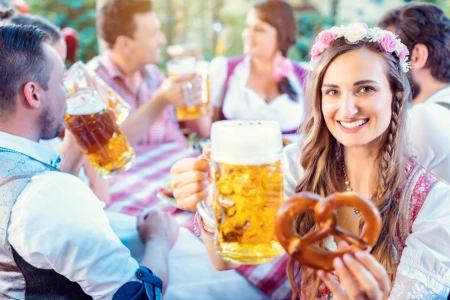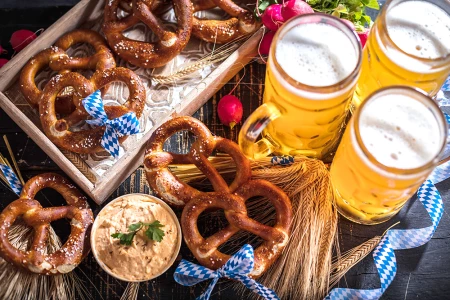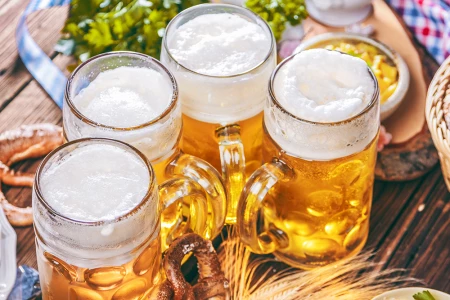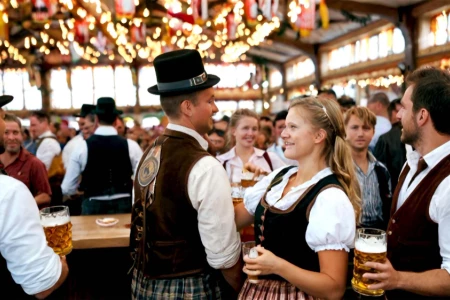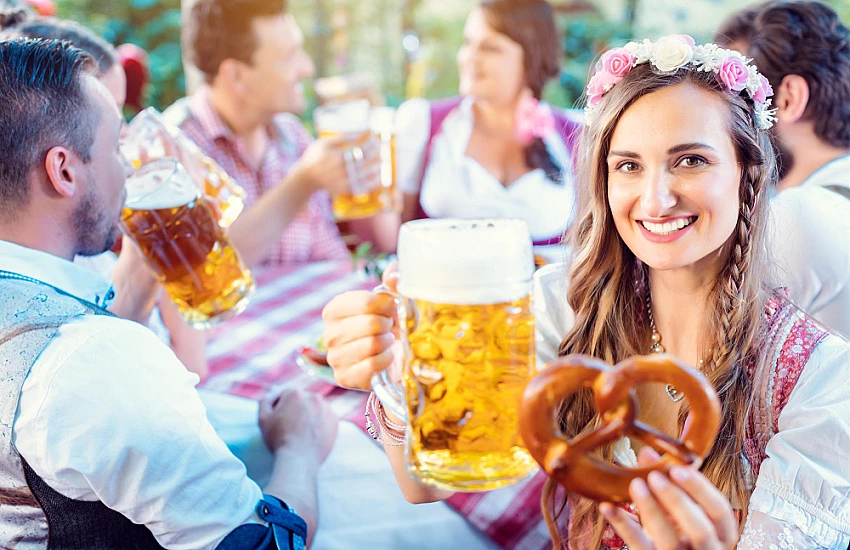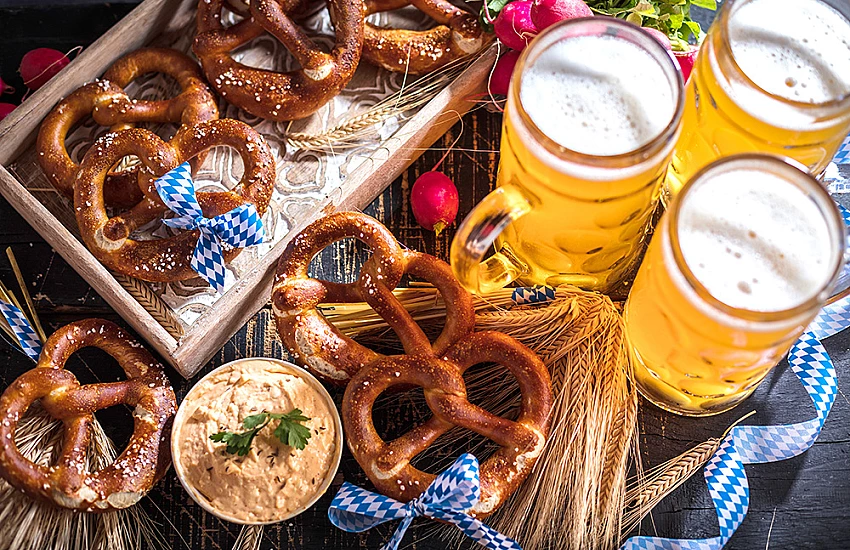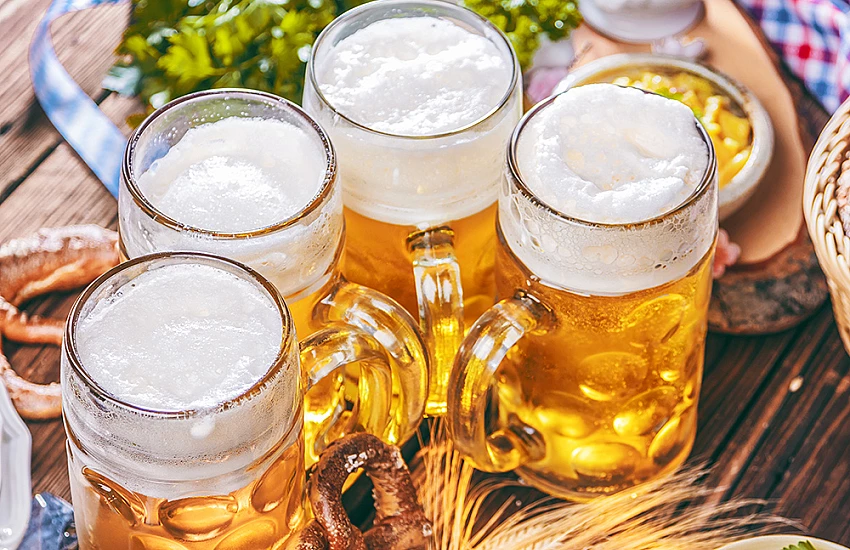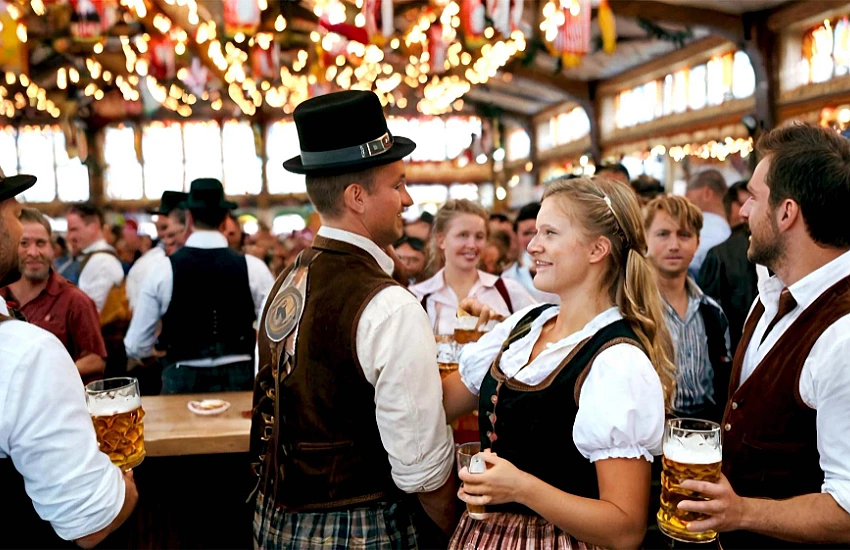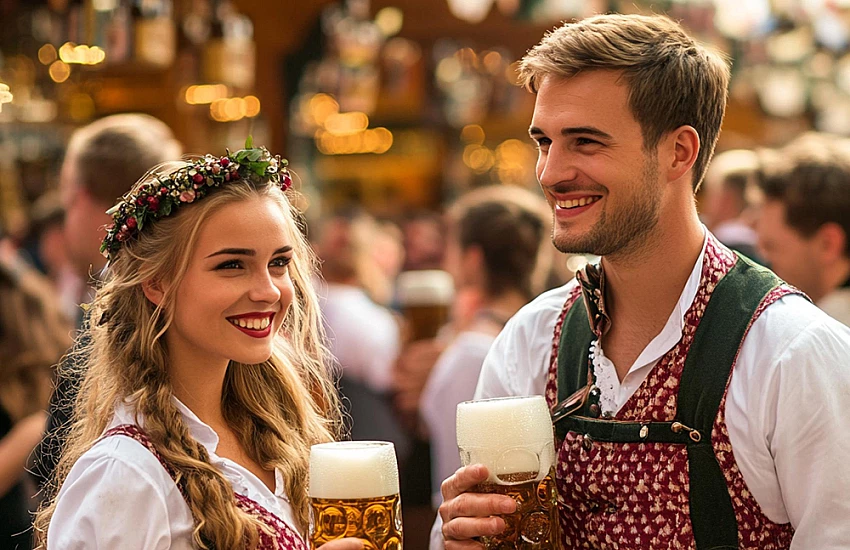
Inhoudsopgave
- Tracing The Tradition: The Evolution Of Lederhosen And Dirndl
- A Toast To Munich: The Artistry Behind Bavarian Beer Making
- Musical Echoes: The Role Of Folk Music In Oktoberfest Celebrations
- Culinary Delights: Iconic Foods And Flavors Of Oktoberfest
- Festivities Unfolded: Key Events And Activities At Munich Oktoberfest
Oktoberfest, the world-renowned festival held annually in Munich, is far more than just an excuse to indulge in beer; it is a vivid celebration of Bavarian history and culture that has its roots firmly planted in the early 19th century. The origins of Oktoberfest date back to October 12, 1810, when Crown Prince Ludwig of Bavaria, who would later become King Ludwig I, married Princess Therese of Saxony-Hildburghausen.
The citizens of Munich were invited to join the royal festivities held on the fields in front of the city gates, which were later named Theresienwiese or Therese's Meadow, in honor of the Princess. The royal wedding was commemorated with grand horse races, drawing enthusiastic crowds and setting a precedent for an annual celebration. As the years passed, the event evolved, both in scope and scale, reflecting integral aspects of Bavarian culture.
By integrating agricultural shows in 1811, the festival began to highlight Bayern's agricultural prowess, encouraging local farmers to showcase their best livestock. It wasn't long before beer, a staple of Bavarian heritage, took center stage. The establishment of beer tents in the late 19th century provided an arena for Munich's breweries to offer their finest brews, transforming Oktoberfest into the beer-centric festivity it's known today.
Traditional Bavarian music, dance, and parades featuring locals in Lederhosen and Dirndls further enriched the festival, preserving and promoting regional customs. Moreover, the event's culinary offerings, such as pretzels, sausages, and roast chicken, reflect the hearty spirit of Bavarian gastronomy.
Tracing The Tradition: The Evolution Of Lederhosen And Dirndl
Lederhosen and dirndls are iconic symbols of Bavarian culture, and their evolution is deeply intertwined with the history of Oktoberfest in Munich. Lederhosen, traditionally made from leather, were originally crafted as durable workwear for peasants and laborers in the Alpine regions. Their practicality and ruggedness made them ideal for the rigorous demands of farming, hunting, and other manual labor. Over time, lederhosen became a distinctive marker of Bavarian identity, celebrated for their craftsmanship and resilience.
The dirndl, on the other hand, evolved from the traditional Alpine dress worn by women in rural areas. Comprising a bodice, blouse, full skirt, and apron, the dirndl was designed for both functionality and femininity. The style allowed for ease of movement in daily tasks while remaining modest yet flattering. The dirndl, like lederhosen, became synonymous with Bavarian tradition, worn with pride to signify regional heritage.
As Oktoberfest gained prominence in the 19th century, these traditional garments transitioned from everyday wear to festive attire. Among the lively celebrations of beer, music, and dance, lederhosen and dirndls became the uniform of revelry, symbolizing a deep-rooted cultural legacy. Their significance was further cemented when members of Bavarian royalty, such as Prince Regent Luitpold, began to don these outfits at public events, thereby elevating them to symbols of national pride.
Today, lederhosen and dirndls have transcended their humble origins to become fashionable expressions of Bavarian culture. Contemporary designs often incorporate modern fabrics and embellishments, reflecting current trends while staying true to their historical roots.
A Toast To Munich: The Artistry Behind Bavarian Beer Making
A toast to Munich is not only a tribute to its rich culture, but also to the artistry that goes into Bavarian beer making, an integral part of Oktoberfest. Munich is renowned for its beer, thanks to age-old brewing traditions that have been passed down through generations. The process itself is a meticulous craft that requires precision, patience, and a deep understanding of ingredients.
Malted barley, hops, yeast, and pristine water from the Alpine foothills are the four key elements that form the cornerstone of Bavarian beer. The quality of these ingredients is paramount, and brewers in Munich take immense pride in sourcing the finest components to create their beverages. The brewing tradition in Munich is deeply intertwined with the Reinheitsgebot, or the German Beer Purity Law, enacted in 1516.
This law originally allowed only water, barley, and hops as ingredients, with yeast being added to the list later. Adherence to the Reinheitsgebot ensures that Munich’s beer remains pure and unadulterated, preserving its esteemed reputation. The brewing process itself unfolds like a carefully choreographed dance, beginning with the mashing stage where malted barley is mixed with hot water to convert starches into fermentable sugars.
This is followed by lautering, boiling, fermenting, conditioning, and finally, packaging. Munich is home to some of the world’s oldest and most revered breweries, such as Augustiner, Hofbräuhaus, and Paulaner, each with its unique history and brewing techniques that add layers to the city’s beer tapestry. These breweries have not only mastered the technical aspects of brewing but also cultivated an unparalleled sense of community.
Musical Echoes: The Role Of Folk Music In Oktoberfest Celebrations
The musical echoes of Oktoberfest are more than just background noise; they are the heartbeat of the celebration, a vital strand in the rich fabric of its cultural heritage. In Munich, the sounds of folk music set the tone for the festival, filling the air with a lively energy that is both timeless and infectious. Originating from Bavaria’s deep-rooted traditions, the folk music played at Oktoberfest spans an impressive array of styles and histories, each contributing to the festival’s vibrant atmosphere.
From the moment you step into the massive beer tents, the strains of brass bands and accordions welcome you with open arms, immersing you in a living tradition. These bands, many of which have been performing for generations, effortlessly blend classic Bavarian tunes with modern pieces, creating a dynamic and engaging soundscape. Songs like "Ein Prosit der Gemütlichkeit" become communal experiences, encouraging festival-goers to clink their beer mugs and sing in unison, embodying the festival's spirit of camaraderie and joy.
The instrumentation itself is emblematic of Bavarian folk music, featuring elements like the alpenhorn, zither, and the ever-present tuba. These instruments don’t just provide melodies but serve as audible links to the past, each note echoing centuries of Bavarian culture and history. Dressed in traditional attire, musicians contribute visually as well, with their Lederhosen and Dirndls adding to the authenticity of the experience.
Beyond the tents, folk music spills into the streets and fairgrounds, where impromptu performances and traditional dance forms like the Schuhplattler animate the festival. These unscripted moments keep the spirit of Oktoberfest alive, ensuring that while the festival modernizes, its roots remain intact.
Culinary Delights: Iconic Foods And Flavors Of Oktoberfest
When it comes to Oktoberfest in Munich, the culinary delights are as much a part of the experience as the beer and the traditional attire. The festival provides a rich tapestry of Bavarian flavors that are both comforting and hearty. Central to these delights is the array of sausages. Bratwurst, Weisswurst, and Nürnberger Rostbratwurst are staples, each carrying its own unique blend of spices and preparation methods.
Weisswurst, or white sausage, is particularly iconic. Traditionally made from minced veal and pork back bacon, it is seasoned with parsley, lemon, mace, onions, ginger, and cardamom. Served with a side of sweet mustard and freshly baked pretzels, these sausages are a true representation of Bavarian culinary culture. No discussion of Oktoberfest cuisine would be complete without mentioning the giant pretzels, or Brezeln.
These doughy delights, with their glossy browned exterior and soft, chewy interior, are often enjoyed with a smear of butter or mustard and pair perfectly with the frothy lagers served at the festival. Meanwhile, the hearty roast chicken, or Hendl, is a crowd favorite, known for its crispy skin and tender, juicy meat. It’s not uncommon to see festival-goers with whole roast chickens, which are often accompanied by Kartoffelsalat, a traditional Bavarian potato salad.
Additionally, Schweinshaxe, or roasted pork knuckle, is another traditional dish that stands out. This slow-roasted piece of meat, often paired with dumplings or sauerkraut, is a testament to the rich flavors of Bavarian cuisine. On the sweeter side, desserts like Apfelstrudel and Kaiserschmarrn provide a delightful end to any meal.
Festivities Unfolded: Key Events And Activities At Munich Oktoberfest
The Munich Oktoberfest, a festival synonymous with Bavarian culture, emerges as a vibrant tableau of festivities, each element meticulously orchestrated to celebrate tradition and community. As the festival unfolds, it begins with the grand parade of Oktoberfest landlords and breweries, a ceremonial procession bursting with color and music. This parade features ornate horse-drawn carriages, traditional costumes, and marching bands, setting the stage for the festivities to come.
Inside the expansive beer tents, revelers are greeted with an atmosphere of camaraderie and cheer. Each tent is a microcosm of Bavarian culture, offering not just flowing lager but a rich array of culinary delights, from pretzels larger than life to succulent roast chicken. Music plays an integral role in the tent experience, with live bands performing traditional folk songs, polkas, and contemporary hits, urging attendees to dance on long wooden benches.
Beyond the beer tents, the Wiesn, as locals call the festival grounds, brims with activities and attractions. The historical section, Oide Wiesn, offers a nostalgic journey into the Oktoberfest of yesteryears, featuring antique rides and traditional Bavarian games. Meanwhile, the main fairgrounds cater to thrill-seekers with modern amusement rides, roller coasters, and a towering Ferris wheel offering panoramic views of Munich’s skyline.
Oktoberfest is also a stage for cultural displays such as traditional Bavarian costume and riflemen parades, where participants don intricate dirndls and lederhosen. These parades weave through the streets of Munich, accompanied by the rhythmic clanging of cowbells and the melodic strains of alpine horns. Children and families find joy in a variety of toned-down activities, including puppet shows, face painting, and gentle fairground rides.






